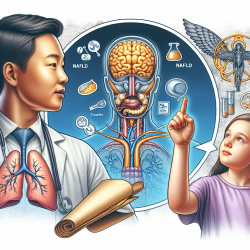Understanding Workplace Reproductive Hazards: A Path to Safer Practices
In the realm of occupational safety, the importance of understanding and mitigating reproductive hazards cannot be overstated. The research article titled A labor perspective on workplace reproductive hazards: past history, current concerns, and positive directions sheds light on the historical and ongoing challenges faced by workers in environments that pose risks to reproductive health. As practitioners, it is crucial to draw insights from such research to enhance our practices and ensure safer workspaces.
Key Insights from the Research
The Supreme Court's ruling in the United Automobile Workers (UAW) versus Johnson Controls case was a landmark decision that barred corporate "fetal protection policies." This ruling underscored the need for policies that do not discriminate based on gender while ensuring health and safety for all workers. Here are some key takeaways from the research that can be implemented in practice:
- Prioritize Hazard Prevention: The primary focus should be on preventing hazardous exposures in the workplace. This involves identifying potential reproductive hazards and implementing measures to mitigate these risks.
- Develop Comprehensive Safety Standards: Establishing occupational health and safety standards that protect both general and reproductive health is essential. These standards should be regularly reviewed and updated to reflect current research and technological advancements.
- Support Legislative Reforms: Advocacy for legislative reforms, such as the Comprehensive Occupational Safety and Health Reform Act (COSHRA), can significantly enhance workplace safety. Practitioners should stay informed about such legislative developments and support initiatives that promote safer work environments.
- Implement Non-Discriminatory Policies: Employers should adopt policies that are both non-discriminatory and health-protective. The guidelines developed by the Legal/Labor Working Group provide a framework for creating such policies.
- Examine Transfer and Income Protections: For workers facing temporary job restrictions due to reproductive hazards, a framework of transfers and income protections should be established to ensure their financial stability and well-being.
Encouraging Further Research
While the research provides a solid foundation, there is always room for further exploration and innovation. Practitioners are encouraged to delve deeper into the topic of workplace reproductive hazards, exploring new methodologies and technologies that can enhance safety measures. Engaging in continuous learning through conferences, publications, and webinars can provide valuable insights and networking opportunities with other professionals in the field.
By implementing the outcomes of this research and committing to ongoing education, practitioners can play a pivotal role in creating safer and more inclusive workplaces.
To read the original research paper, please follow this link: A labor perspective on workplace reproductive hazards: past history, current concerns, and positive directions.










